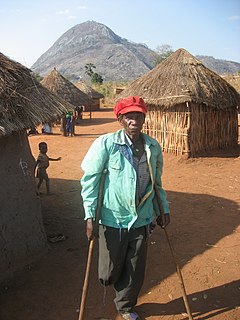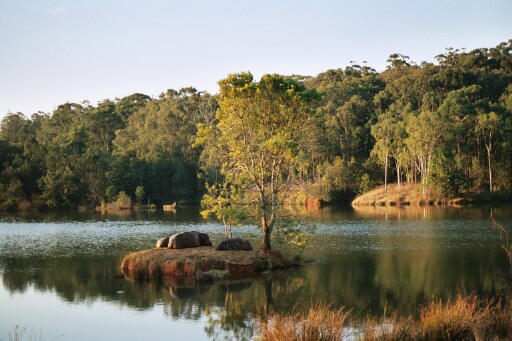
Eswatini, officially the Kingdom of Eswatini and also known as Swaziland, is a landlocked country in Southern Africa. It is bordered by Mozambique to its northeast and South Africa to its north, west and south. At no more than 200 kilometres (120 mi) north to south and 130 kilometres (81 mi) east to west, Eswatini is one of the smallest countries in Africa; despite this, its climate and topography are diverse, ranging from a cool and mountainous highveld to a hot and dry lowveld.
The economy of Eswatini is fairly diversified, with agriculture, forestry and mining accounting for about 13 percent of GDP, manufacturing representing 37 percent of GDP and services – with government services in the lead – constituting 50 percent of GDP.
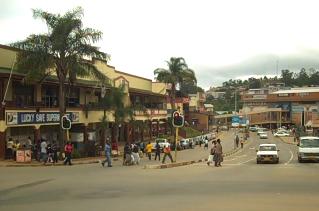
Mbabane is the capital and largest city in Eswatini. With an estimated population of 94,874 (2010), it is located on the Mbabane River and its tributary the Polinjane River in the Mdzimba Mountains. It is located in the Hhohho Region, of which it is also the capital. The average elevation of the city is 1243 meters. It lies on the MR3 road.
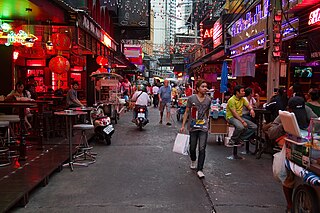
Sex tourism is travel to a different locale for the sake of sexual activity, particularly with prostitutes. The World Tourism Organization, a specialized agency of the United Nations, defines sex tourism as "trips organized from within the tourism sector, or from outside this sector but using its structures and networks, with the primary purpose of effecting a commercial sexual relationship by the tourist with residents at the destination".

Tourism in Denmark constitutes a growth industry. Tourism is a major economic contributor at approx. DKK 82 billion in revenue and 120,000 full-time-equivalent-jobs annually, for the tourism experience industry alone in 2014.

With 58.3 million tourists a year (2017), Italy is the fifth most visited country in international tourism arrivals. People mainly visit Italy for its rich culture, cuisine, history, fashion and art, its beautiful coastline and beaches, its mountains, and priceless ancient monuments. Italy also contains more World Heritage Sites than any other country in the world.

Tourism is the largest economic industry in the Maldives, as it plays an important role in earning foreign exchange revenues and generating employment in the tertiary sector of the country. The archipelago of the Maldives is the main source of attraction to many tourists visiting the island country..

Lobamba is the traditional, spiritual, and legislative capital city of Eswatini, seat of the Parliament, and residence of the Ntombi, the Queen Mother. Mswati III lives about 10 kilometres (6.2 mi) away at the Lozitha Palace. The King and Queen Mother participate in annual December and January Incwala ceremonies and August and September Reed Dancees at the Royal Kraal.
Child labour in Eswatini is a controversial issue that affects a large portion of the country's population. Child labour is often seen as a human rights concern because it is "work that deprives children of their childhood, their potential and their dignity, and that is harmful to physical and mental development," as defined by the International Labour Organization (ILO). Additionally, child labour is harmful in that it restricts a child's ability to attend school or receive an education. The ILO recognizes that not all forms of children working are harmful, but this article will focus on the type of child labour that is generally accepted as harmful to the child involved.
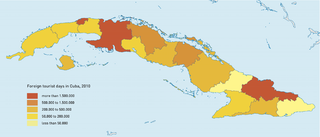
Tourism in Cuba is an industry that generates over 4.5 million arrivals in 2017, and is one of the main sources of revenue for the island. With its favorable climate, beaches, colonial architecture and distinct cultural history, Cuba has long been an attractive destination for tourists. "Cuba treasures 253 protected areas, 257 national monuments, 7 UNESCO World Heritage Sites, 7 Natural Biosphere Reserves and 13 Fauna Refuge among other non-tourist zones."
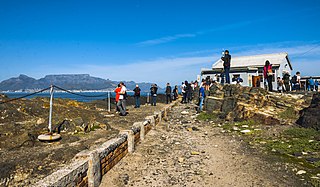
South Africa is a tourist destination and the industry accounts for a substantial amount of the country's revenue. According to the World Travel & Tourism Council, the tourism industry directly contributed ZAR 102 billion to South African GDP in 2012, and supports 10.3% of jobs in the country. The official national marketing agency of the South African government, with the goal of promoting tourism in South Africa both locally and globally is known as South African Tourism.

The following outline is provided as an overview of and topical guide to Eswatini:

Despite a high potential for tourism, tourism in Madagascar is underdeveloped. Madagascar's tourist attractions include its beaches and biodiversity. The island's endemic wildlife and forests are unique tourist attractions. However, historical sites, craftsmen communities, and relaxed cities make it a favorite with return travellers.

Tourism is the most important nongovernment sector of Seychelles' economy. About 15 percent of the formal work force is directly employed in tourism, and employment in construction, banking, transportation, and other activities is closely tied to the tourist industry. Tourists enjoy the Seychelles' coral beaches and opportunities for water sports. Wildlife in the archipelago is also a major attraction.
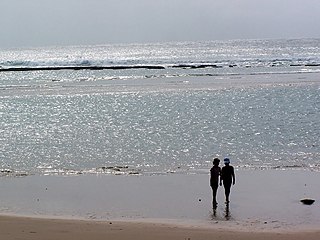
The tourism assets of Mozambique include the country's natural environment, wildlife, and cultural heritage, which provide opportunities for beach, cultural, and eco-tourism.

Tourism in Morocco is well developed, with a strong tourist industry focused on the country's coast, culture, and history. Morocco has been one of the most politically stable countries in North Africa, which has allowed tourism to develop. The Moroccan government created a Ministry of Tourism in 1985. Tourism is considered as one of the main foreign exchange sources in Morocco and since 2013 it had the highest number of arrivals out of the countries Africa..
Prostitution in Eswatini is illegal, the anti-prostitution laws dating back to 1889, when the country Eswatini was a protectorate of South Africa. Law enforcement is inconsistent, particularly near industrial sites and military bases. Police tend to turn a blind eye to prostitution in clubs. There are periodic clamp-downs by the police.

Eswatini–South Africa relations refers to the current and historical relationship between Eswatini and South Africa. South Africa surrounds Swaziland on the north, west and south. The two states share strong historical and cultural ties. Mutual High Commissions were established in Pretoria and Mbabane at the end of the apartheid era in 1994. Swaziland's High Commission in Pretoria is also accredited to Botswana, Lesotho, Namibia, Zambia and Zimbabwe.

Visitors to Mozambique unless they come from one of the visa exempt countries can obtain a visa on arrival at all border posts or from one of the Mozambican diplomatic missions.


